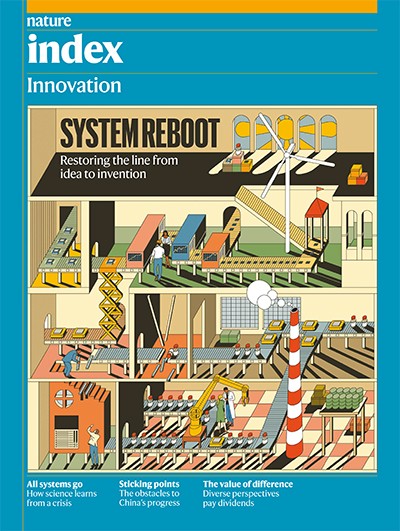Turning cutting-edge basic science into new technologies, medicines and other inventions that benefit our daily lives — while simultaneously bringing commercial rewards — is the foundation of a knowledge economy. Conventional wisdom dictates that the success of this strategy depends on strong public and private investment in research and development, excellent higher and technical education, and an openness to the exchange of ideas and people across borders. Some of these building blocks of innovation have come under severe strain during the past 15 years, first from the aftermath of the 2009 global recession, then a rise in geopolitical tensions and, most recently, the COVID-19 pandemic and economic impact of the war in Ukraine.
In this supplement, we look at how countries and research institutions have been responding to these challenges to build the innovation economies that are set to thrive in the rest of the twenty-first century. It includes a focus on the emergency response to the pandemic and what lessons this might provide in the future for quickly bridging the gap between basic science and its application; a discussion on the importance of promoting diversity, equity and inclusion in modern innovation; and an analysis of innovation in China, where there are still ambitions to forge a stronger link between blue-sky research and commercial success.
Elsewhere, we combine data on researcher density and the World Intellectual Property Organization’s Global Innovation Index — a ranking of the world’s economies on innovation-related metrics — with statistics from the Nature Index to assess some of the possible factors underlying innovation success. The supplement is anchored throughout by an analysis of the research institutions leading on one particular measure of innovation, patent influence, using data from The Lens database, which links scholarly articles to the patents in which basic research has been cited.



 The institutions forging the strongest innovation links
The institutions forging the strongest innovation links
 How the pandemic inspired a new generation of creators
How the pandemic inspired a new generation of creators
 Diversity and inclusion is a must to make innovation work for all
Diversity and inclusion is a must to make innovation work for all
 How leading nations fare on applying knowledge
How leading nations fare on applying knowledge
 Is China open to adopting a culture of innovation?
Is China open to adopting a culture of innovation?





